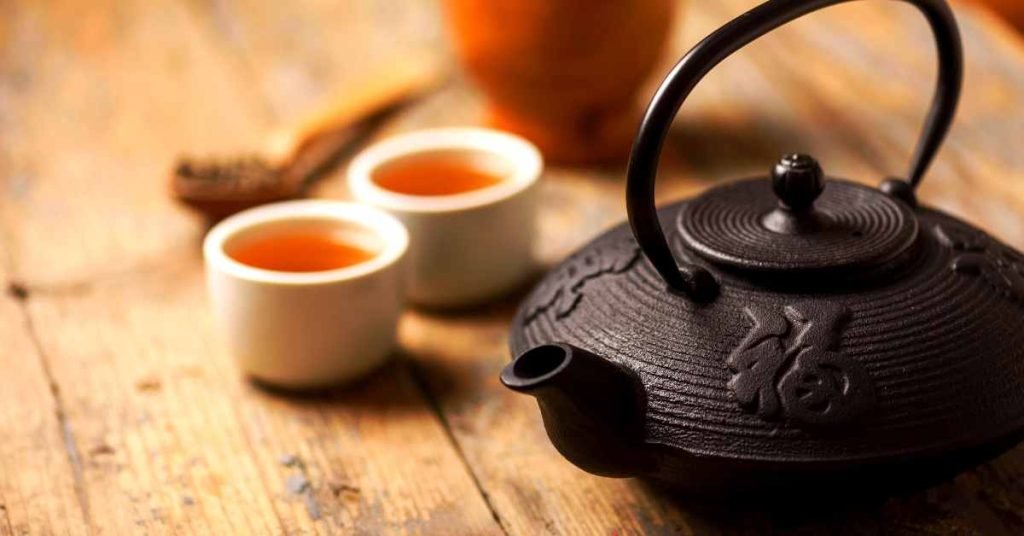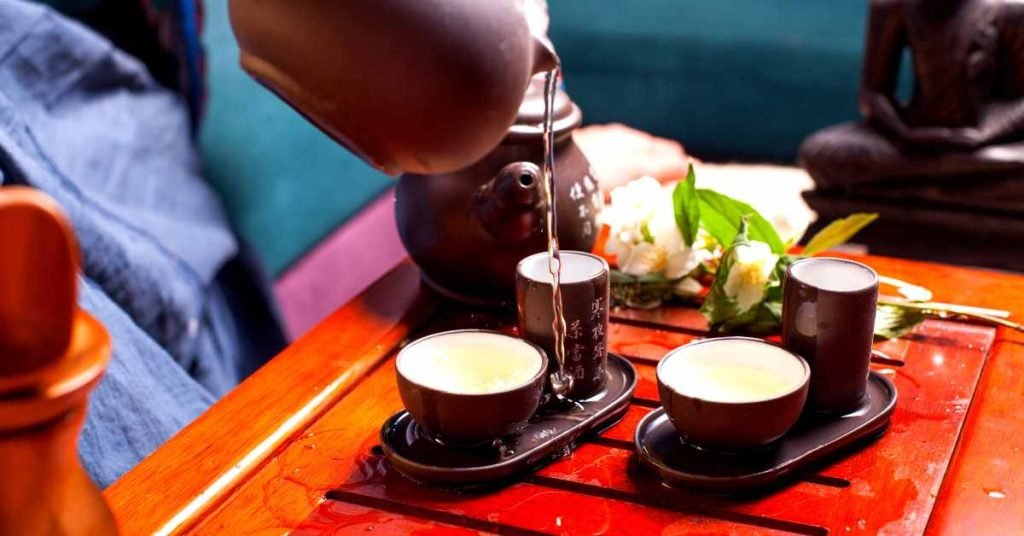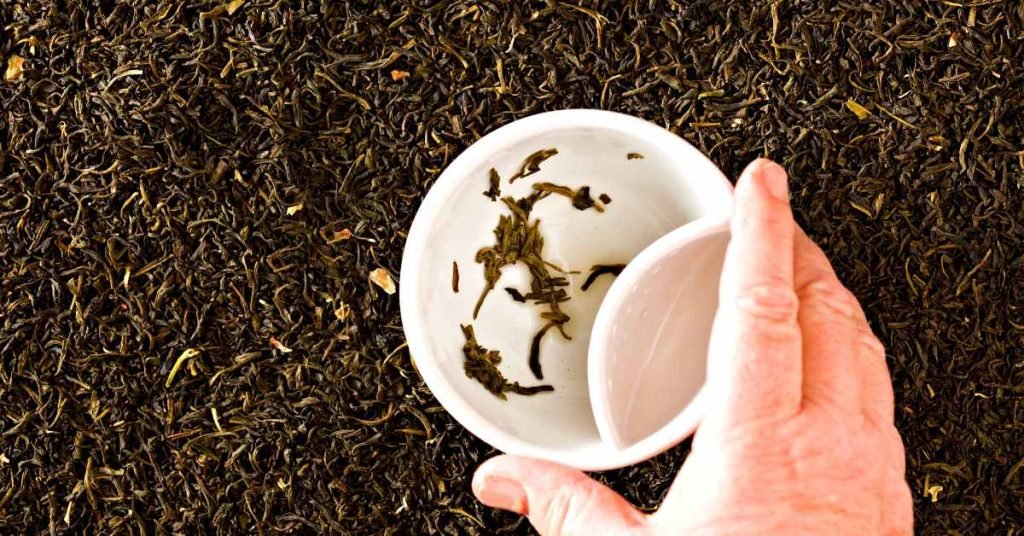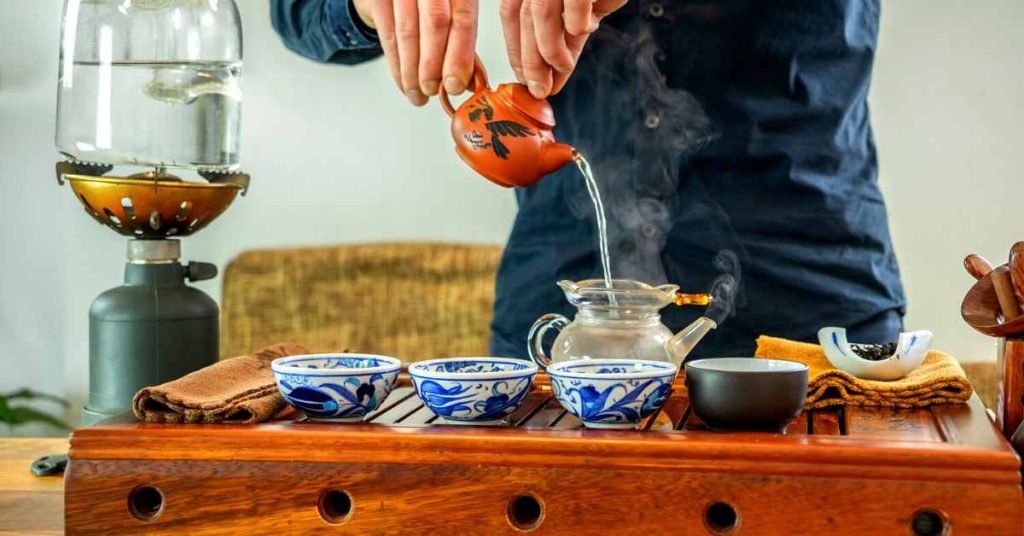Discover how this delicious beverage became known and gained popularity over time.
As the warm aroma of freshly brewed tea wafts through the air, it is easy to overlook the rich tapestry of history woven into each delicate sip.
For millennia, tea has been a beloved beverage, cherished not only for its comforting qualities but also for its cultural significance.
Embarking on a journey through time, we delve into the fascinating history of tea, specifically focusing on the period from 0 to 500 AD, an era that witnessed the origins and early developments of this iconic beverage.
In this article, we embark on a captivating exploration, peering into the past to uncover the ancient roots of tea.
From its enigmatic beginnings to its spread across ancient civilizations, we uncover the pivotal moments and captivating legends that have shaped its remarkable trajectory.

Our journey commences at the dawn of the Common Era, a time when the first inklings of tea’s existence emerge from the fog of history.
We venture through the ancient lands of China, where the tea plant, Camellia sinensis, made its initial appearance, captivating the hearts and palates of early tea enthusiasts.
The legendary tales of Emperor Shen Nong, the revered “Divine Farmer,” and his fortuitous encounter with tea leaves form the bedrock of tea’s genesis, and we shall explore the mystical origins steeped in folklore.
From the sacred realms of China, we traverse across the vast expanse of the Silk Road, the lifeline of trade and cultural exchange.
Tea, a precious commodity, began its journey along this ancient trade route, enchanting merchants and travelers alike.
We unearth the tales of early tea caravans, braving treacherous terrain and encountering diverse civilizations, such as the Parthians and the nomadic tribes of Central Asia, who adopted tea into their own unique cultural tapestries.
Amidst our exploration, we encounter the pivotal moment when tea first crossed the threshold into the ancient world of Japan.
The rich traditions of the Japanese tea ceremony began to take shape during this era, laying the groundwork for the profound cultural and philosophical influence that tea would wield in later centuries.

This article aims to shed light on the historical significance of tea during its formative years, exploring the intriguing customs, rituals, and medicinal properties that accompanied its consumption.
We delve into the transformational role tea played in society, traversing the boundaries of medicine, religion, and social interaction, leaving an indelible mark on the diverse tapestry of ancient civilizations.
So, join us on this enlightening voyage through time, as we unravel the mysteries surrounding the origins of tea and delve into the captivating history that unfolds from the year 0 to 500 AD.
Embark on this sensory and intellectual odyssey, as we gain a deeper appreciation for the humble leaf that has stirred passions and fostered connections across the ages.
Do you know the history behind the tea you drink every day? If you think it has always been drunk as it is today, you are in for a big surprise.
Year 200
Tea was drunk at that time as a decoction. The macerated leaves were boiled with milk and orange peel. At one point in the Ming dynasty, tea was no longer a decoction but an infusion.

The dried leaves are finely ground, and boiling water is added and stirred with a bamboo stick.
Year 250
A large handcrafted production of beautiful porcelain began in China, including the first cups and teapots for tea.
Year 300
By this time tea was a daily beverage in China.
In Buddhism, mediation was very important for understanding the relationship between nature and God.
Tea was also one of the main elements that complement meditation.
Year 320
Tea infusion in China was consumed as a beverage, medicine, or tonic, prepared from tender green leaves of wild trees.
To adjust the supply to growing demand and ensure regular production, many farmers began to cultivate tea bushes in their small holdings. In this way, a system of drying and marketing developed simultaneously.
Year 350

The first published reference to methods of planting, brewing, and drinking tea in China.
Year 375
Tea was the most popular beverage in China. The three main stages of development are boiled tea, brewed tea, and infused tea.
The three “schools” are indicative of the thoughts of their respective eras, corresponding to the Tang, Song, and Ming dynasties.
Year 400
China had an agrarian organization, even exporting tea to neighboring countries, especially Japan and Tibet.
The transportation system was precarious, the caravans are slow and dangerous and the commerce has in great part a primitive system of barter.
Year 414
The appearance of Kombucha tea, the divine tea in Korea. In the year 414, a Korean doctor named Kombu used to treat the ailments of the Japanese Emperor Inkyo.
Modern research by Pastor Weidenger suggests that the name of this variety derives from Kombu and the Chinese word – chá – meaning tea, hence kombucha. The German writer Günter Frank.

However, he argues that the name kombucha derives from the Japanese word “kombu” meaning seaweed and – chá – tea, hence seaweed tea.
Year 478
A document of this date indicates that in China pressed pills were used, made from steamed green tea leaves. They were then used as barter in trade relations with the Turks.
Final Word
The journey through the history of tea from 0 to 500 AD has taken us on a captivating exploration, unraveling the enigmatic origins and early developments of this beloved beverage.
From its mythical beginnings in ancient China to its emergence along the Silk Road and its assimilation into the rich traditions of Japan, tea has left an indelible mark on the cultural, social, and medicinal landscapes of the ancient world.
Throughout this era, tea evolved from a mystical plant enjoyed by emperors and nobles to a sought-after commodity that transcended borders and connected diverse civilizations.
Its allure and influence grew as it traversed the trade routes, forging pathways of cultural exchange and sparking a desire for exploration and discovery.

Beyond its exquisite flavors and aromatic profiles, tea became entwined with ritualistic practices, playing a pivotal role in religious ceremonies, social gatherings, and moments of introspection.
It provided solace, a sense of harmony, and a medium for philosophical contemplation.
From China’s tea temples to Japan’s meditative tea ceremonies, the rituals surrounding tea showcased the reverence and respect bestowed upon this humble leaf.
The medicinal properties of tea were also recognized during this era, with its consumption believed to bestow health and longevity.
Ancient healers and scholars praised its therapeutic qualities, using it to treat ailments and elevate the well-being of individuals.
Tea became a symbol of vitality, and its use in traditional medicine further deepened its cultural significance.
As we reflect on the history of tea from 0 to 500 AD, we are reminded of its enduring legacy.
Its humble beginnings as an herbal infusion transformed into a beverage that transcended boundaries, cultures, and centuries.
The journey of tea in this period set the stage for the global phenomenon it would become in the years that followed.
Today, as we savor a cup of tea, we become part of an ancient tradition that has woven its way through the fabric of human civilization.

The history of tea invites us to embrace the stories, legends, and cultural nuances that have shaped its identity, and to appreciate the profound impact it has had on our collective heritage.
So, let us raise our cups in celebration of tea’s rich history, acknowledging the early innovators and explorers who introduced this remarkable beverage to the world.
As we sip the brew, we honor the ancient civilizations that nurtured its growth, and we become custodians of a tradition that has endured for thousands of years.
May the story of tea continue to steep in our hearts and minds, fostering connection, contemplation, and a deep appreciation for the simple pleasures found in a single sip.
MEDICAL DISCLAIMER
Itsnevernotteatime.com cannot and does not contain medical/health advice. The medical/health information is provided for general and educational purposes only and is not a substitute for professional advice.




